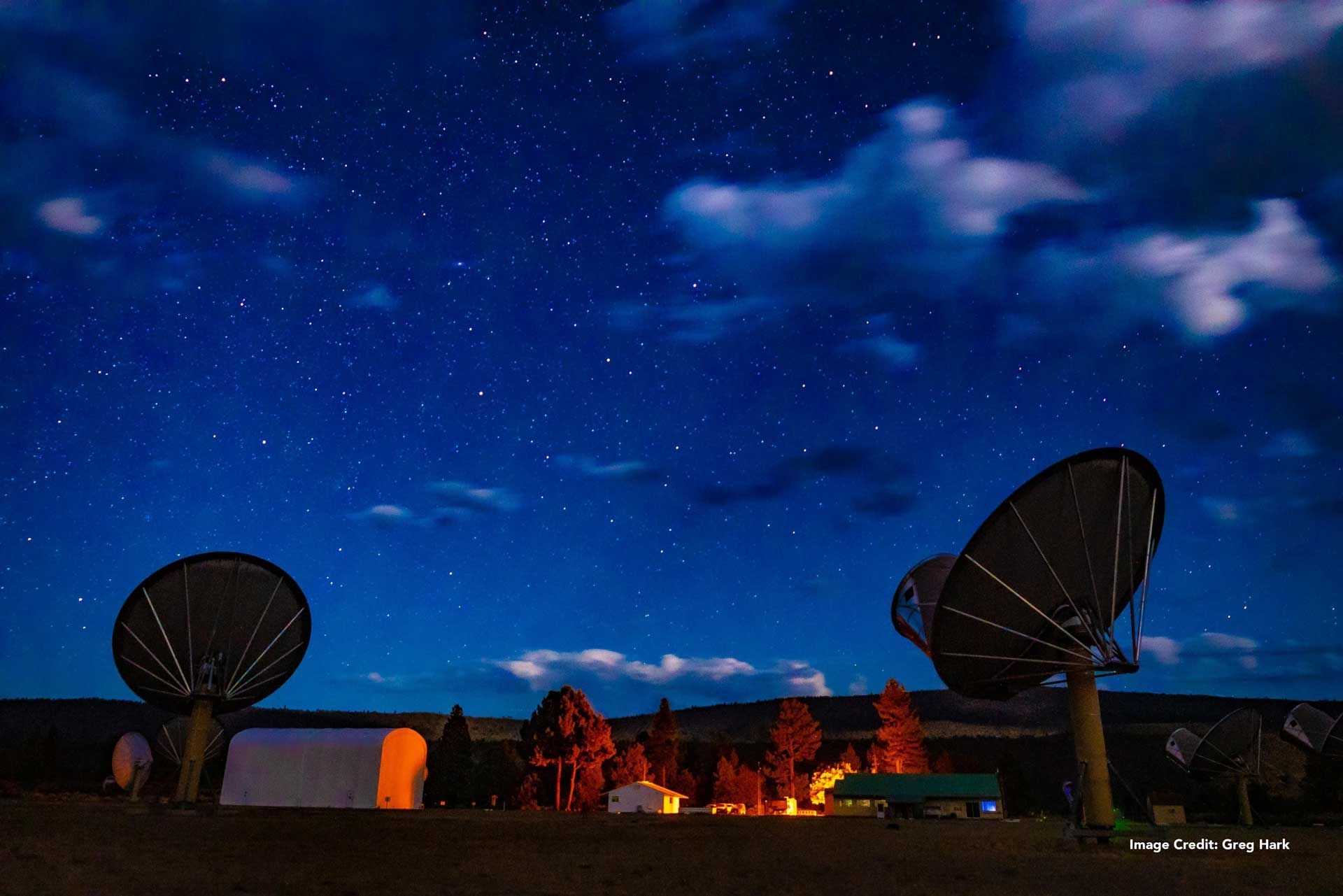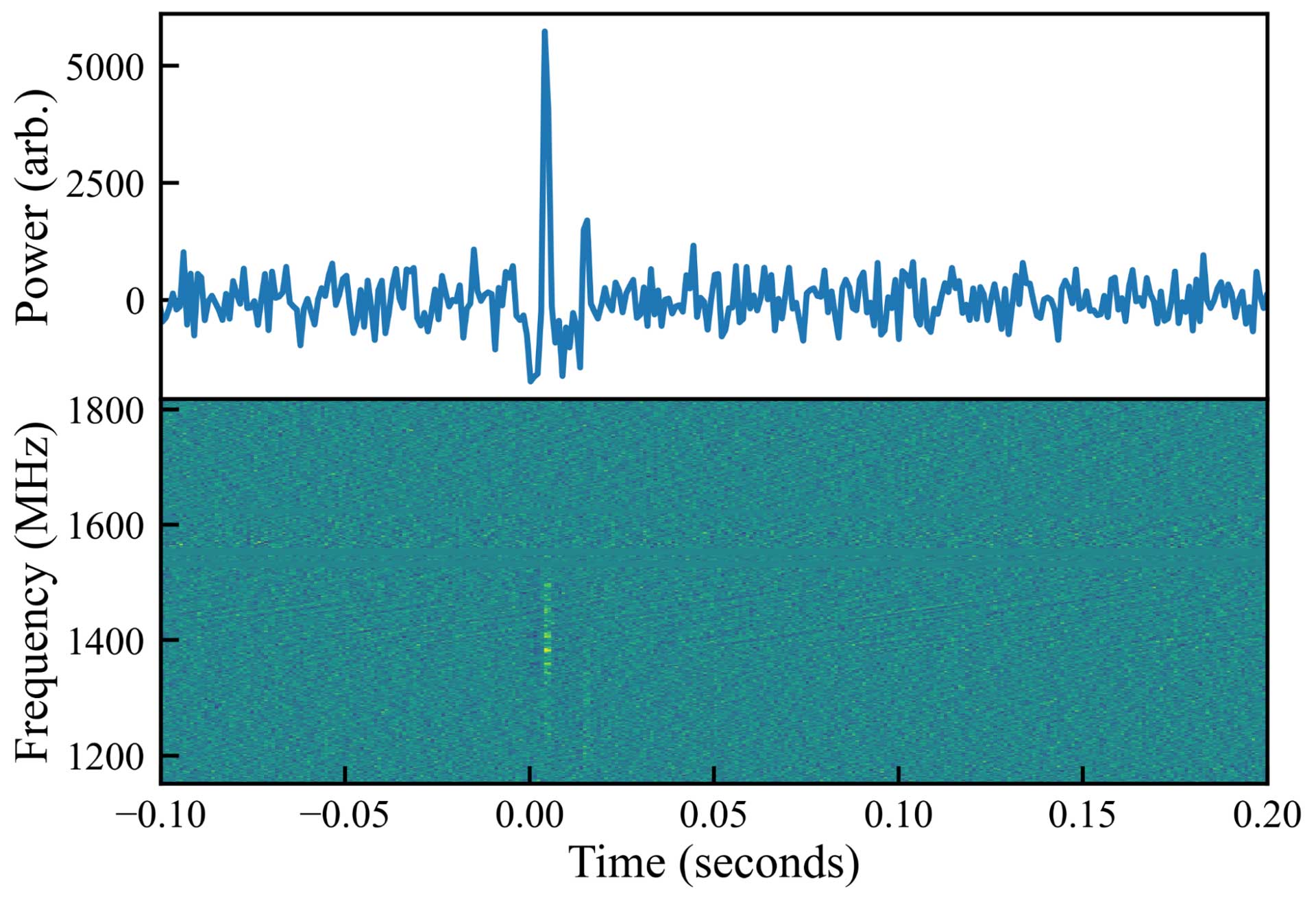
Researchers at the SETI Institute’s Allen Telescope Array (ATA) announced the detection of a bright double-peaked radio burst from the repeating source known as FRB20201124A . The ATA has been undergoing a refurbishment program aimed at upgrading the telescope feeds and the digital signal processing system to improve the sensitivity and capability of the instrument. This discovery marks the first FRB detection with this nascent system.
“This is a major milestone to achieve at the ATA,” said Wael Farah, a research scientist at the ATA. “A 2 millisecond signal could never be detected unless the entire system was in perfect working order.”
Fast Radio Bursts (FRBs) are bright, millisecond-wide “flashes” in the radio spectrum, originating at cosmological distances. As they make their few-billion-year journey to earth, FRBs carry the imprint of the material lying between galaxies and stars, making them a significant probe to study these environments. While the current scientific consensus is that FRBs have natural origins, they represent an exciting astronomical phenomenon. Their high degree of spectro-temporal structure and transient nature make them an ideal proving ground for the robust signal processing systems built for technosignature searches.
The detection took place on May 18th and was the ATA’s first FRB emanating from the repeating source FRB20201124A. This discovery has been reported in the form of an “astronomer telegram” (ATEL), https://www.astronomerstelegram.org/?read=14676.
The ATA upgrades will significantly increase the sensitivity of its receivers and permit the development of a new digital processing system that will bring enhanced capabilities. The upgrades are funded by a gift from Qualcomm founder Franklin Antonio. The digital signal processing hardware that were used for this discovery were funded via a grant from the Mt. Cuba Astronomical Foundation.
The three-year initiative includes:
- Revision to the existing feed design to improve reliability and sensitivity
- Design and construction of a novel multi-mode digital signal processing system allowing the ATA to cover the radio spectrum 10 times faster, operate in new ultra-wide-field observing modes and target new classes of signals, including fast radio bursts (FRBs)
- The hiring of additional scientific and engineering staff to fully realize the ATA’s potential to contribute to technosignature science.
The following is the ATEL text:
We report the detection of a bright double-peaked radio burst from the repeating source FRB20201124A using the Allen Telescope Array (ATA). The ATA has been undergoing a refurbishment program aimed at upgrading the telescope feeds and the digital signal processing system to improve the sensitivity and capability of the instrument. This discovery marks the first FRB detection with this nascent system.
For these observations, nine of the 42, 6.1-m, dishes were tuned to a spectral band centered at 1.5 GHz, with an effective bandwidth of 720 MHz. Dual-polarisation data from the antennas were split into 2880 frequency channels each 0.25 MHz wide each, and detected and integrated to a time resolution of 480 microseconds. The data from the 9 dual-polarization signals were then incoherently summed and processed using the GPU-accelerated dedispersion algorithm, HEIMDALL (Barsdell 2012). FRB-candidate plots were generated and subjected to human scrutiny.
The time of arrival of the first peak, at the highest frequency, is 2021-05-18-01:26:11.9 UTC, and the two peaks are roughly separated by 10 ms. The dispersion measure of the first component, as reported by HEIMDALL is 411.72 pc cm^{-3}. We estimate the temporal widths of the first and second components at 2.8 ms and 1.9 ms, respectively. The signal-to-noise ratio (S/N) of the first component measured across the 200 MHz band where the emission is brightest is ~20, giving a preliminary fluence estimate of 120 Jy-ms. The measured S/N of the second peak is 10, and an estimate of its fluence is 45 Jy-ms.

Bottom: dynamic spectrum dedispersed at DM=411.72 reported by HEIMDALL. Top: frequency-averaged, uncalibrated total intensity time series.





